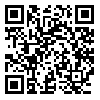1. Chaloupka, E., Kang, J., Masterangelo, M. (1997). Cardiorespiratory and metabolic responses during forward and backward walking. Journal of Orthopaedic Sports Physical Therapy. 25(5): 302-6.
2. Winter, D.A., Patla, A.E., Frank, J.S. (1990). Assessment of balance control in humans. Medical Progress Technology. 16(1-2): 31-51.
3. Hertel, J., Gay, M.R., Denegar, C.R. (2002). Differences in postural control during single-leg stance amoung healthy individuals with different foot types. Journal of Athletic Training. 37: 129-32.
4. Horak, B. (1997). Clinical assessment of balance disorders. Gait and Posture. 6: 76-84.
5. Bruyneel, A.V., Mesure, S., Pare, J.C., Bertrand, M. (2010). Organization of postural equilibrium in several planes in ballet dancers. Neuroscience Letters. 485: 228-32.
6. Bressel, E., Yonker, J.C., Kras, J., Health, E.M. (2007). Comparison of static and dynamic balance in female collegiate soccer, basketball and gymnastics athletes. Journal of Athletic Training.42(1): 42-6.
7. McGuine, T.A., Kneene, J.S. (2006). The effect of a balance training program on the risk of ankle sprins in high school athletes. American Journal of Sports Medicine. 34: 1103-11.
8. Sabin, M.J. (2011). Reliability and validity of the condition-modition star excursion balance test. Influence of Concussion History. University of Illinois.
9. Bell, D.R., Guskiewicz, K.M., Clark, M.A., CES, M.P., Padua, D.A. (2011). Systematic review of the balance error scoring system. Sports Health. 3(3): 287-95.
10. Jansen, E.C., Larsen, R.E., Olesen, M.B. (1982). Quantitative romberg's test. Measurement and computer calculation of postural stability. Acta Neurologica Scandinavica. 66(1):93-9.
11. Khasnis, A., Gokula, R.M. (2003). Romberg’s test. Journal of Postgraduate Medicine. 49(2): 169.
12. Paula, K., Yim¬¬¬-Chiplis, P.K., Laura, A.T. (2000). Defining and measuring balance in adults. Biological Research for Nursing. 1: 321-31.
13. Johnson, B.L., Nelson, J.K. (1979). Fitness testing. Stork balance stand test practical measurements for evaluation in physical education. 4th Edition. Minneapolis. Burgess.
14. Gladwell, V., Head, S., Haggar, M., Beneke, R. (2006). Does a program of pilates improves chronic non-specific low back pain?. Journal of Sport Rehabilitation. 15: 338-50.
15. Reiman, M.P., Manske, R.C. (2009). functional testing in human performance. Chapter 7: 104-115. Human Kinetics .
16. Allard, P., Nault, M.L., Hinsc, S., LeBlanc, R., Labelle, H. (2001). Relationship between morphologic somatotypes and standing posture equilibrium. Annals of Human Biology Journal. 28(6): 624-33.
17. Timothy, G.L., Alex, F.R., Reynaldo, M. (1998). Anthropometric Standardization reference Manual. Chapter 2: 15-17.
18. Gribble, P.A., Hertel, J. (2003). Consideration for normalizing measures of the star excursion balance test. Measurement in Physical Education and Exercise Science. 7(2):89-100.
19. Hertel, J., Miller, S., Denegar, C. (2000). Intratester and intertester reliability during the star excursion balance tests. Journal of Sport Rehabilitation. 9: 104–16.
20. Teresa, L.A., Kban, K.M., Enge, J.J., Janssen, P.A., Lord, S.R., Mckay, H.A. (2004). Resistance and agility training reduce fall risk in women aged 75 to 85 with low bone mas: A 6-month randomized, controlled trail. Journal of the American Geriatrics Society. 52: 657-65.
21. Podsiadlo, D., Richardson, S. (1991). The timed “up and go”: a test of basic functional mobility for frail elderly persons. Journal of the American Geriatrics Society. 39(2): 142-8.
22. Thrane, G., Joakimsen, R.M., Thornquist, E. (2007). The association between timed up and go test and history of falls: The Tromsø study. BMC Geriatrics. 7:1.
23. Wall, J.C., Bell, C., Campbell, S., Davis, J. (2000). The timed get-up-and-go test revisited: measurement of the component tasks. Journal of Rehabilitation Research and Development. 37: 109–14.
24. Yelnik, A., Bonan, I. (2000). Clinical tools for assessing balance disorders. Clinical Neurophysiology. 38: 439–45.
25. Kazemi, B., Jazaieri, M., Etemadi, A. (2003-2004). The effect of balance exercises in the elderly women by rolling boards in sitting position”.Armaghan Danesh Winter. 8(32): 23-32. [In Persian].








